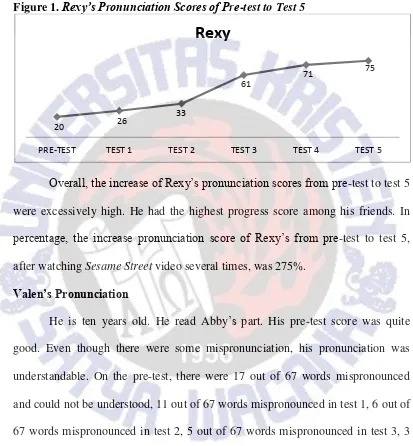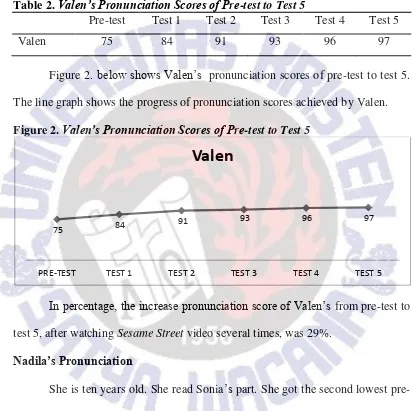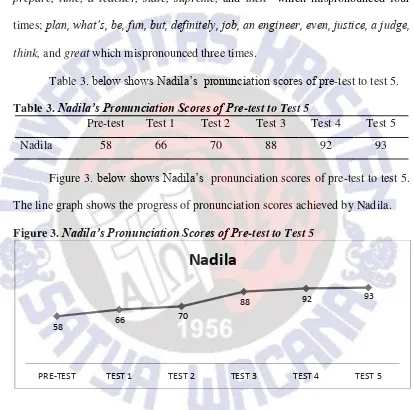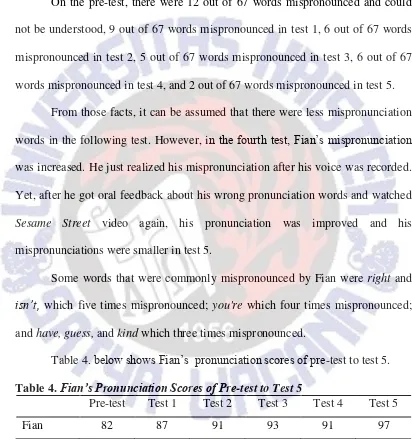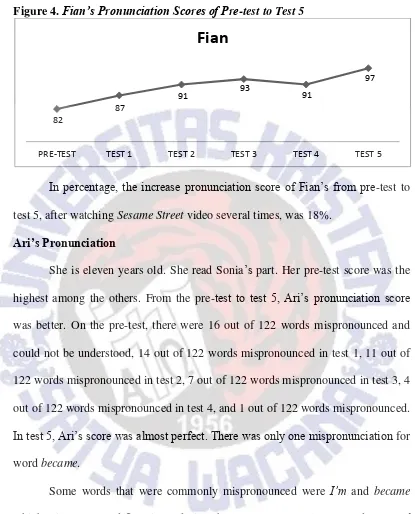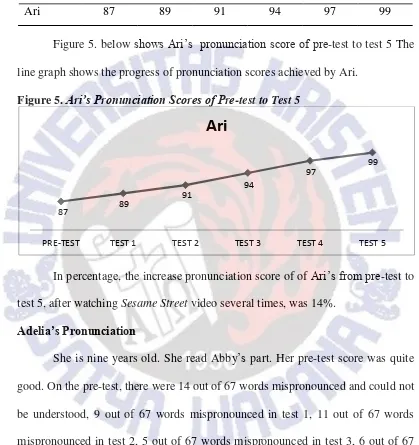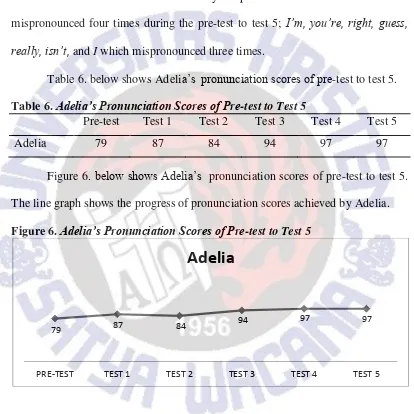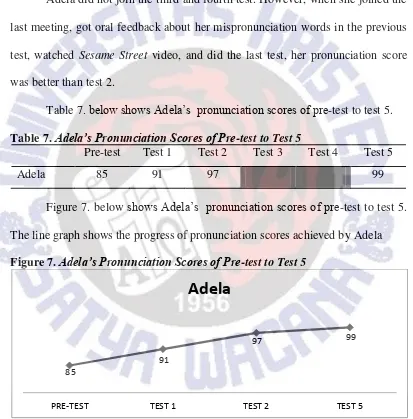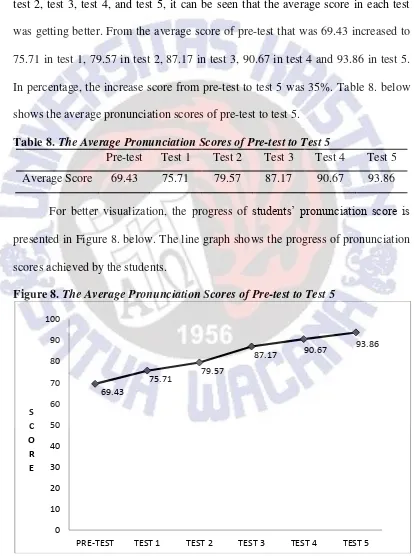THESIS
Submitted in Partial Fulfillment of the Requirements for Degree of
Sarjana Pendidikan
Maria Eka Wijayanti 112009049
ENGLISH DEPARTMENT
FACULTY OF LANGUAGE AND LITERATURE SATYA WACANA CHRISTIAN UNIVERSITY
THESIS
Submitted in Partial Fulfillment of the Requirements for Degree of
Sarjana Pendidikan
Maria Eka Wijayanti 112009049
ENGLISH DEPARTMENT
FACULTY OF LANGUAGE AND LITERATURE SATYA WACANA CHRISTIAN UNIVERSITY
This thesis contains no such material as has been submitted for examination in any course or accepted for the fulfillment of any degree or diploma in any university. To the best of my knowledge and my belief, this contains no material previously published or written by other any person except where due reference is made in the text.
Copyright © 2013. Maria Eka Wijayanti and Prof. Dr. I. G. Gusti Astika, M.A.
All rights reserved. No part of this thesis may be reproduced by any means without the permission of at least one of the copyright owners or the English Department, Faculty of Language and Literature, Satya Wacana Christian University, Salatiga.
As a member of the (SWCU) Satya Wacana Christian Univerity academic community, I verify that:
Name : Maria Eka Wijayanti
Student ID Number : 112009049
Study Program : English Department
Faculty : Faculty of Language and Literature Kind of Work : Undergraduate Thesis
In developing my knowledge, I agree to provide SWCU with a non-exclusive royalty free right for my intellectual property and the contents therein entitled:
The Use of Sesame Street Program to Develop Pronunciation for Primary Students
along with any pertinent equipment.
With this non-exclusive royalty free right, SWCU maintains the right to copy, reproduce, print, publish, post, display, incorporate, store in or scan into a retrieval system database, transmit, broadcast, barter or sell my intellectual property, in whole or in part without my express written permission, as long as my name is still included as the writer.
This declaration is made according to the best of my knowledge. Made in : Salatiga
Date : 2013
Verified by signee,
Maria Eka Wijayanti Approved by
Thesis Supervisor Thesis Examiner
THE USE OF SESAME STREET PROGRAM TO DEVELOP PRONUNCIATION FOR PRIMARY STUDENTS
Maria Eka Wijayanti
Abstract
The focus of this study is to find out whether Sesame Street video helped children to develop their pronunciation in English. In this study, a descriptive method was used to study the pronunciation development of seven primary students. The students were asked to watch Sesame Street video several times, and then their voice was recorded as they were reading the script. The average scores of correct pronunciation in each treatment were made into a line graph to show the pronunciation development. It was found that the average score increased 35% from pre-test to test 5. The findings show that the more students watch and listen to the video, the better their pronunciation was. This study could be very useful to teachers in teaching pronunciation to primary school students and to students to gain better English pronunciation by using Sesame Street video.
Keywords: Sesame Street video, pronunciation, primary students.
Introduction
Pronunciation is a prominent aspect in foreign language learning. It becomes one of the main elements in speaking no matter what the language is. Clear and correct pronunciation is important since it will establish the meaning and make the words understandable. Pronunciation is defined as “the production
of significant sound in two senses: (1) as part of code of a particular language, and (2) to achieve meaning in contexts of use” (Dalton & Seidlhofer, 2001, p.3). As
communication possible. In short, the definition denotes that pronunciation can identify English sounds to other languages and make communication achievable.
For years, many English learners, including young learners, have been struggling, but many times they fail to pronounce English words correctly. In some cases, the difficulties are due to the fact that irregular spelling of the language offers poor guidance to its pronunciation (Syafei, 1988). Different L1 may also be one of the causes why many learners fail. English may be strange to the learners because they stick to their L1, which may be completely different from English. The L1 pronunciation, sound, or intonation and rhythm were learned very early in life and are rooted deeply in students’ mind (Gilbert, 2008). Even though there are many techniques used to teach pronunciation, many learners still find difficulties in pronouncing English words correctly. One method that can be used to drill English pronunciation is by using English video (Kumai, 1996 in Wijayanti, 2010).
improve their pronunciation skill. Gilbert (2008) claimed that by watching English video, people will recognize the rhythmic and melody patterns and learn pronunciation: word stress, intonation, and rhythm. In addition, learning pronunciation through watching English video provides a rich context for developing interactional skills and improving intelligibility (Goodwin, 2004).
Thus, it is believed that by watching an English video, primary students will be familiar with English sounds and help them a lot better if they want to deliver speeches in English later. This study aimed to provide information about watching English video to improve pronunciation skill. With the above consideration, the goal in this study was to find out whether Sesame Street video helped children to develop their pronunciation in English. In other words, this research tried to answer the following question, Does Sesame Street video help to develop the primary students’ pronunciation in learning English? Sesame Street was chosen because it is a famous program and the topics conveyed are mostly daily topics which have clear pronunciation. Besides, based on interview conducted to some children, many children like Sesame Street due to its funny characters.
Research Question
Purpose of the Research
It was expected that this study could provide information about watching English video that could help primary students to improve their pronunciation skill. With the above consideration, the goal in this study was to find out whether Sesame Street video helped children to develop their pronunciation in English.
Benefits of the Research
The results of this study might help young learners to gain better English pronunciation by using Sesame Street video and help the student teachers or teachers to develop their lesson plans and curriculum in teaching pronunciation skills, and to other students who might want to do further study about this later on.
Literature Review Pronunciation
According to James (2010), cited Gilakjani (2012), a learner's pronunciation has three basic levels: Level 1: People often do not understand what the speaker is saying because of the wrong sounds. Level 2: People understand what the speaker is saying, but the speaker's pronunciation is not pleasant to listen to because he/she has a distracting and/or heavy accent. Level 3: People understand the speaker, and the speaker's English is pleasant to listen to. Scovel (1988) refers to this as comfortable intelligibility, and he suggests that this, rather than native-like accuracy, should be the goal of pronunciation.
A learner will have acceptable pronunciation when other people can understand what he/she says and the sounds are pleasant to be listened to. In other words, the speaker is comfortably intelligible. Acceptable pronunciation is not the same as having American or British accents. The learners' accents should be close to a standard variety, because an accent that deviates too far from a recognized standard has the risk of becoming distracting and unpleasant. Thus, learners do not need to aim for a particular accent, but they do need to develop their own accent as close as possible to the standard variety. If learners are far from the standard, they sometimes will not communicate successfully. If they communicate successfully, they will be judged negatively (James, 2010, cited Gilakjani, 2012).
Based on some definition states by some experts above, it means that pronunciation is a set of habits of producing sounds which can be achieved by repeating and correcting if it is pronounced inaccurately. The main aim of pronunciation is not having perfect pronunciation or being native-like pronunciation, but having acceptable pronunciation which can be understood by the listeners. To sum up, the purpose of pronunciation is to develop clear and good pronunciation.
Teaching Pronunciation Using English Video to Young Learners
Considering the importance of pronunciation, teaching pronunciation should be a priority because language is primarily a means of communication and this communication should be understood by all. Teaching pronunciation becomes crucial since this is the most important source of understanding.
intelligible pronunciation, which is considered as the essential component of communicative competence (Morley, 1991 in Thompson & Gaddes, 2005). Therefore, having intelligible pronunciation which means that the pronunciation can be clearly and easily understood by the listeners would be emphasized in this study after the participants watched Sesame Street video several times.
One method to cover and gain the segmental and the supra-segmental, and also comfortable intelligibility in pronunciation is by using English pronunciation models in EFL teaching pronunciation. (James, 2010, in Gilakjani, 2012). Exposure to real English pronunciation models, such as by watching English video, can be a suitable and effective technique to help the learners acquire intelligible pronunciation as well as watching CNN International or BBC. Using English videos will be effective since it belongs to authentic audio-visual material which refers to texts we encounter every day. In addition, English video will give the students and teachers a very handy way of accessing English real life in the classroom. For that reason, Sesame Street video was chosen to facilitate the students have intelligible pronunciation by using English pronunciation models and bring them into English real life in the classroom as well as to make the students be familiar with the texts they come across every day.
According to Allan (1985, pp.48 – 49), in the context of EFL teaching, English video can present realistic ‘slices of life’ which means video is a good means of bringing ‘a slice of living language’ into the classroom, get students
videos are life-like. Audiences can see and listen to the communication between people in videos which resembles actual communication processes in the real world.
Furthermore, the benefit of using English video to teach pronunciation is in the variety of voices and intonation since in a video there usually are a number of actors, all with different voices, speaking with different dialects, or using different intonation, which is always good for the learners to distinguish such phenomena and be to able to understand it in order to master the language (Hrubý, 2010). Teaching and learning English pronunciation using English video will benefit the students, especially primary students, in two ways. First, it re-affirms to students that what they are learning in the classroom is actually used in the real world, and it helps the students to gain confidence in using English when dealing with real world situations as they have already been exposed to real English in the classroom.
The video will provide young learners with real-life situation where learners can really observe real native communication which covers the pronunciation components, such as word stress, intonation, and even gestures which will make great effect in learners’ pronunciation. The use of English video
with English subtitles is also a great help to students. Students will have the opportunity to match speaking with the written language if they have problems following fast native speakers’ speaking pace. Thus, English video, in this case
Sesame Street video, in drilling the beginner learners’ pronunciation will be used
Previous Research on Teaching Pronunciation
Watching English video has been proven to improve the students’ pronunciation skill. A previous research done by Cenoz and Lecumberri (1996) shows that listening to radio and TV, including ear training, was proven to improve students’ pronunciation. De Bot’s finding (1983) also shows that learners
instructed with audio-visual feedback did significantly better. In addition, Wijayanti (2010), in her case study toward two students of English Department in Satya Wacana Christian University, also found that English movies help learners pronounce English better. The score results of her case studies proved that after the subjects watching English movie, their pronunciation significantly improved.
James (1976, pp. 227-243) mentioned that the best way to drill on pronunciation – especially intonation, is by using an audiovisual representation of the target speech (videos), including a feedback of the speakers’ imitations. Teaching pronunciation by watching English video will help the students a lot since it will provide paralinguistic information such as gestures, facial expression, and mouth shape, videos rather than audio tapes give a timing framework for speaking. (Kumai, 1996). Thus, by watching English videos, the learners will be able to observe native speakers’ communication in a real-life language situation,
as well as imitating their pronunciation. This also belongs to the reason why the writer was interested in seeing whether this phenomenon happens in the context of the study.
intelligible pronunciation could still possible to the learners who acquire a second language in early childhood than to individuals who start acquiring a second language after early childhood (Derwing & Munro, 2005; Busà, 2008). However, a native-like pronunciation is not necessarily to be obtained, as proposed by Jenkins (2000, 2002), cited in Derwing & Munro (2005), still intelligible pronunciation is needed to comprehend the meaning conveyed by the speaker. Therefore, a drill on pronunciation is done by many researchers and would be done in this study as well.
The Study
This study used a descriptive method which describes the students’ pronunciation development after watching Sesame Street video and was based on case study held to seven students in grade five of SDN Karangjati 1 Blora.
Participants
The participants in this study were seven students in grade five of SDN Karangjati 1 Blora, whose ages ranged from 9 to 11. Only seven out of twenty four students were chosen to ease data analysis. The students had learnt English since they were in the first grade of elementary school. They were randomly selected from the list given by the teacher. The students chosen came from different ability level. Different ability level is decided by looking at the English grade in raport book.
Research Instrument
(www.sesamestreet.org), entitled Carrier. The video had conversations between two characters of Sesame Street program, Abby Cadabby and Sonia Sotomayor. The duration of this video was one minute and forty one seconds. Sesame Street video was chosen because it is a well-known program. Moreover, based on interview conducted to some children, most children love it due to its funny characters. Relating to pronunciation, the main reason in choosing Sesame Street was that English pronunciation spoken in the video was intelligible. Intelligible pronunciation means that the pronunciation is clear and easy to be understood by the listeners. Furthermore, the language used and the topic conveyed was appropriate for young learners.
Data Collection
The study aimed at investigating the pronunciation development after watching the same video of Sesame Street several times. Thus, an observation technique was adopted for this case study. Observation was chosen to get more valid data about the students’ pronunciation development.
The treatment was held outside the school lesson hour. The observation started with a pre-test in which the students were required to read a script of Sesame Street without watching the video beforehand which can be seen in Appendix 1. The students had to read aloud the script in pairs to enable their pronunciation to be recorded. To check the students’ understanding of the script, they had an opportunity to ask if they had any difficult words or idioms.
watched the video three times. After one treatment, there was oral feedback given to each student about his/ her pronunciation. In addition, while watching the video, the students were asked to read the script as well.
The pre-test and the first treatment were done in one day, on March 9, 2013. The second treatment was done on March 15, 2013. The third and fourth treatments were done on March 18, 2013. The fifth treatment was done on March 19, 2013. The time interval of each treatment was not too long to ensure that the students still remember what they had learned on the previous meeting and also to see the development of the students’ pronunciation if they watched English video to gain better pronunciation.
In order to know students’ pronunciation development, the recordings
were analyzed. The analysis was done quantitatively by giving a score for each recording of each student in each treatment. The score results were put into a table and presented in a line graph. Thus, a line graph based on the scores was used to describe and display the students’ pronunciation development.
Findings and Discussion
This section reports the findings of the study and discusses the results of the observation presented in table and line graphs/ figures. The pronunciation score of each participant was obtained by dividing the number of correct pronunciation by the number of total words read. Then, the result was multiplied by one hundred. The formula was presented below:
The first following sections present each student’s pronunciation.
Rexy’s Pronunciation
He is nine years old. He read Sonia’s part. His pre-test score was the lowest among the others. His pronunciation was difficult to be understood because of the wrong sounds. Based on James theory (2010, cited Gilakjani, 2012), Rexy’s
pronunciation was in level 1.
On the pre-test, there were 97 out of 122 words mispronounced and could not be understood, 90 out of 122 words mispronounced in test 1, 82 out of 122 words mispronounced in test 2, 48 out of 122 words mispronounced in test 3, 35 out of 122 words mispronounced in test 4, and 30 out of 122 words mispronounced in test 5. Thus, it can be concluded that there were less mispronunciation words in the following test. There were some words that were commonly mispronounced, though. Those words were I’m, we’re, train, and, on, time, but, that, for, train, state, I, studied, and became mispronounced five times during the pre-test to test 5; here, all, about, a carrier, that, prepare, fun, train, and, prepare, for, can, to, be, scientist, united, I, went, school, law, then, and judge mispronounced four times; hi, tell, plan, doing, a long, pretending, be, a, princess, is, definitely, remember, you, do, time, school, a teacher, a lawyer, a doctor, and engineer, even, supreme, court, justice, think, and great which mispronounced three times.
Table 1. below shows Rexy’s pronunciation scores of pre-test to test 5. Table 1. Rexy’s Pronunciation Scores of Pre-test to Test 5
Pre-test Test 1 Test 2 Test 3 Test 4 Test 5
Figure 1. below shows Rexy’s pronunciation scores of pre-test to test 5. The line graph shows the progress of pronunciation scores achieved by Rexy. Figure 1. Rexy’s Pronunciation Scores of Pre-test to Test 5
Overall, the increase of Rexy’s pronunciation scores from pre-test to test 5
were excessively high. He had the highest progress score among his friends. In percentage, the increase pronunciation score of Rexy’s from pre-test to test 5,
after watching Sesame Street video several times, was 275%. Valen’s Pronunciation
He is ten years old. He read Abby’s part. His pre-test score was quite good. Even though there were some mispronunciation, his pronunciation was understandable. On the pre-test, there were 17 out of 67 words mispronounced and could not be understood, 11 out of 67 words mispronounced in test 1, 6 out of 67 words mispronounced in test 2, 5 out of 67 words mispronounced in test 3, 3 out of 67 words mispronounced in test 4, and 2 out of 67 words mispronounced in test 5. Thus, it can be concluded that there were less mispronunciation words in the following test. However, there were some words that were commonly mispronounced. Those words were princess and you’re which five times
20 26
33
61
71 75
PRE-TEST TEST 1 TEST 2 TEST 3 TEST 4 TEST 5
mispronounced; kind which four times mispronounced; and right and guess which three times mispronounced.
Table 2. below shows Valen’s pronunciation scores of pre-test to test 5. Table 2. Valen’s Pronunciation Scores of Pre-test to Test 5
Pre-test Test 1 Test 2 Test 3 Test 4 Test 5
Valen 75 84 91 93 96 97
Figure 2. below shows Valen’s pronunciation scores of pre-test to test 5. The line graph shows the progress of pronunciation scores achieved by Valen. Figure 2. Valen’s Pronunciation Scores of Pre-test to Test 5
In percentage, the increase pronunciation score of Valen’s from pre-test to
test 5, after watching Sesame Street video several times, was 29%. Nadila’s Pronunciation
She is ten years old. She read Sonia’s part. She got the second lowest pre-test score. On the pre-pre-test, there were 51 out of 122 words mispronounced and could not be understood, 42 out of 122 words mispronounced in test 1, 36 out of 122 words mispronounced in test 2, 15 out of 122 words mispronounced in test 3, 10 out of 122 words mispronounced in test 4, and 9 out of 122 words mispronounced in test 5. Therefore, it can be inferred that there were less
75 84
91 93 96 97
PRE-TEST TEST 1 TEST 2 TEST 3 TEST 4 TEST 5
mispronunciation words in the following test. There were some words that were commonly mispronounced, though. Those words were were, here, that, I, united, studied, and became which mispronounced five times during the pre-test to test 5; prepare, time, a teacher, state, supreme, and then which mispronounced four times; plan, what’s, be, fun, but, definitely, job, an engineer, even, justice, a judge, think, and great which mispronounced three times.
Table 3. below shows Nadila’s pronunciation scores of pre-test to test 5. Table 3. Nadila’s Pronunciation Scores of Pre-test to Test 5
Pre-test Test 1 Test 2 Test 3 Test 4 Test 5
Nadila 58 66 70 88 92 93
Figure 3. below shows Nadila’s pronunciation scores of pre-test to test 5. The line graph shows the progress of pronunciation scores achieved by Nadila. Figure 3. Nadila’s Pronunciation Scores of Pre-test to Test 5
The raising pronunciation score of Nadila’s from pre-test to test 5 were quite significant. In percentage, the increase pronunciation score of Nadila’s from
pre-test to test 5, after watching Sesame Street video several times, was 60%.
58 66
70
88 92 93
PRE-TEST TEST 1 TEST 2 TEST 3 TEST 4 TEST 5
Fian’s Pronunciation
He is ten years old. He read Abby’s part. His pre-test score was quite good in which his pronunciation was understandable.
On the pre-test, there were 12 out of 67 words mispronounced and could not be understood, 9 out of 67 words mispronounced in test 1, 6 out of 67 words mispronounced in test 2, 5 out of 67 words mispronounced in test 3, 6 out of 67 words mispronounced in test 4, and 2 out of 67 words mispronounced in test 5.
From those facts, it can be assumed that there were less mispronunciation words in the following test. However, in the fourth test, Fian’s mispronunciation was increased. He just realized his mispronunciation after his voice was recorded. Yet, after he got oral feedback about his wrong pronunciation words and watched Sesame Street video again, his pronunciation was improved and his mispronunciations were smaller in test 5.
Some words that were commonly mispronounced by Fian were right and isn’t, which five times mispronounced; you're which four times mispronounced;
and have, guess, and kind which three times mispronounced.
Table 4. below shows Fian’s pronunciation scores of pre-test to test 5. Table 4. Fian’s Pronunciation Scores of Pre-test to Test 5
Pre-test Test 1 Test 2 Test 3 Test 4 Test 5
Fian 82 87 91 93 91 97
Figure 4. Fian’s Pronunciation Scores of Pre-test to Test 5
In percentage, the increase pronunciation score of Fian’s from pre-test to
test 5, after watching Sesame Street video several times, was 18%. Ari’s Pronunciation
She is eleven years old. She read Sonia’s part. Her pre-test score was the highest among the others. From the pre-test to test 5, Ari’s pronunciation score was better. On the pre-test, there were 16 out of 122 words mispronounced and could not be understood, 14 out of 122 words mispronounced in test 1, 11 out of 122 words mispronounced in test 2, 7 out of 122 words mispronounced in test 3, 4 out of 122 words mispronounced in test 4, and 1 out of 122 words mispronounced. In test 5, Ari’s score was almost perfect. There was only one mispronunciation for
word became.
Some words that were commonly mispronounced were I’m and became which mispronounced five times during the pre-test to test 5; even and a united which mispronounced four times; here, pretending, definitely, think, and great which mispronounced three times.
82
87
91
93
91
97
PRE-TEST TEST 1 TEST 2 TEST 3 TEST 4 TEST 5
Table 5. below shows Ari’s pronunciation scores of pre-test to test 5.
Table 5. Ari’s Pronunciation Scores of Pre-test score to Test 5
Pre-test Test 1 Test 2 Test 3 Test 4 Test 5
Ari 87 89 91 94 97 99
Figure 5. below shows Ari’s pronunciation score of pre-test to test 5 The line graph shows the progress of pronunciation scores achieved by Ari.
Figure 5. Ari’s Pronunciation Scores of Pre-test to Test 5
In percentage, the increase pronunciation score of of Ari’s from pre-test to test 5, after watching Sesame Street video several times, was 14%.
Adelia’s Pronunciation
She is nine years old. She read Abby’s part. Her pre-test score was quite good. On the pre-test, there were 14 out of 67 words mispronounced and could not be understood, 9 out of 67 words mispronounced in test 1, 11 out of 67 words mispronounced in test 2, 5 out of 67 words mispronounced in test 3, 6 out of 67 words mispronounced in test 4, and 2 out of 67 words mispronounced in test 5.
From those facts, it can be assumed that there were less mispronunciation words in the following test. However, in the second test, Adelia’s
mispronunciation was increased. As Fian, she just realized her mispronunciation
after her voice was recorded. Yet, after getting oral feedback about her wrong pronunciation words and watched Sesame Street video again, Adelia’s pronunciation was improved and there were less mispronunciation in test 3.
Some words that were commonly mispronounced were kind and which mispronounced four times during the pre-test to test 5; I’m, you’re, right, guess, really, isn’t, and I which mispronounced three times.
Table 6. below shows Adelia’s pronunciation scores of pre-test to test 5. Table 6. Adelia’s Pronunciation Scores of Pre-test to Test 5
Pre-test Test 1 Test 2 Test 3 Test 4 Test 5
Adelia 79 87 84 94 97 97
Figure 6. below shows Adelia’s pronunciation scores of pre-test to test 5. The line graph shows the progress of pronunciation scores achieved by Adelia. Figure 6. Adelia’s Pronunciation Scores of Pre-test to Test 5
In percentage, the increase pronunciation score of Adelia’s from pre-test to
test 5, after watching Sesame Street video several times, was 23%. Adela’s Pronunciation
She is ten years old. She read Abby’s part. Her pre-test score was quite good. As Abby, Adela had the lowest mispronunciation than others during
pre-79 87 84
94 97 97
PRE-TEST TEST 1 TEST 2 TEST 3 TEST 4 TEST 5
test, test 1, test 2, and test 5. On the pre-test, there were 10 out of 67 words mispronounced and could not be understood, 6 out of 67 words mispronounced in test 1, 2 out of 67 words mispronounced in test 2, and 1 out of 67 words mispronounced in test 5.
Adela did not join the third and fourth test. However, when she joined the last meeting, got oral feedback about her mispronunciation words in the previous test, watched Sesame Street video, and did the last test, her pronunciation score was better than test 2.
Table 7. below shows Adela’s pronunciation scores of pre-test to test 5. Table 7. Adela’s Pronunciation Scores of Pre-test to Test 5
Pre-test Test 1 Test 2 Test 3 Test 4 Test 5
Adela 85 91 97 99
Figure 7. below shows Adela’s pronunciation scores of pre-test to test 5. The line graph shows the progress of pronunciation scores achieved by Adela Figure 7. Adela’s Pronunciation Scores of Pre-test to Test 5
In percentage, the increase pronunciation score of Adela’s from pre-test to
test 5, after watching Sesame Street video several times, was 16%.
85
91
97 99
PRE-TEST TEST 1 TEST 2 TEST 5
Discussion
After the participants’ pronunciation scores were obtained, the average score from each test was calculated. By counting the averages of pre-test, test 1, test 2, test 3, test 4, and test 5, it can be seen that the average score in each test was getting better. From the average score of pre-test that was 69.43 increased to 75.71 in test 1, 79.57 in test 2, 87.17 in test 3, 90.67 in test 4 and 93.86 in test 5. In percentage, the increase score from pre-test to test 5 was 35%. Table 8. below shows the average pronunciation scores of pre-test to test 5.
Table 8. The Average Pronunciation Scores of Pre-test to Test 5
Pre-test Test 1 Test 2 Test 3 Test 4 Test 5 Average Score 69.43 75.71 79.57 87.17 90.67 93.86
For better visualization, the progress of students’ pronunciation score is presented in Figure 8. below. The line graph shows the progress of pronunciation scores achieved by the students.
Figure 8. The Average Pronunciation Scores of Pre-test to Test 5
The line graph clearly shows the progress of students’ pronunciation
scores. It shows that the participants’ pronunciation increased from pre-test to test
5. It means that the students in this study appeared to gain better pronunciation after they watched Sesame Street video. Even Rexy and Nadila’s pronunciation scores increased significantly after watching Sesame Street video. Even though there were some words mispronounced by the students, such as I’m, we’re, here, a united, state, studied and became by Sonia, and you’re, right, guess, isn’t, and kind by Abby, it can be interpreted that Sesame Street video helped primary students to develop their pronunciation.
Conclusion and Recommendation
The aim of this research was to find out whether Sesame Street video helped children to develop their pronunciation in English. In other words, this research tried to answer the following question, Does Sesame Street video help to develop the primary students’ pronunciation in learning English? Aside from the
number of mispronouncing words which still appeared in the last test, the analysis of students’ pronunciation score shows that their pronunciation increased from
pre-test to test 5. Therefore, the answer is: yes, Sesame Street video helped to develop primary student’s pronunciation in learning English.
research. They could also use group samples, e.g. one group of advance learners, intermediate learners, and one group of beginner learners.
References
Busà, M. G. (2008). New Perspectives in Teaching Pronunciation. Pp. 165 – 182. Retrieved November 6, 2012, from http://www.openstarts.units.it/dspace/ bitstream/10077/2850/1/bus%C3%A0.pdf Publisher: EUT - Edizioni Università di Trieste.
Cook, V. ( 1996). Second Language Learning and Language Teaching. London : Arnold.
Dalton, C., & Seidlholfer, B. (2001). Language Teaching: A Scheme for Teacher Education. Retrieved December 5, 2012 from http://books.google. co.id/books?id=rDp7SlTbwHEC&printsec=frontcover &dq=pronunciation &hl=id&sa=X&ei=GNi-UO-CLqXwmAWypoDYCA&ved=0CDYQ6AE wAw#v=onepage&q=pronunciation&f=false
De Bot, K. (1983). Visual feedback of intonation I: Effectiveness and induced practiced behavior. Language and Speech, 26, 331-350.
Derwing, T. M., & Munro, M. J. (2005). Second Language Accent and Pronunciation Teaching: A Research-Based Approach. TESOL Quarterly, 39(3), 379–397.
Gilakjani, A. P. (2012).The Significance of Pronunciation in English Language Teaching. English Language Teaching, Vol. 5, No. 4, 96-107.
Gilbert, J. B. (2008). Teaching Pronunciation Using the Prosody Pyramid. Cambridge: Cambridge University Press.
Goodwin, J. (2004). A technique for improving intelligibility Using Film Clips to Teach Pronunciation. Retrieved November 2, 2012 from http:// www.international.ucla.edu/languages/lab/profiles/janetgoodwin/Goodwin -usingfilmclips. pdf
Jenkins, J. (2000). The phonology of English as an international language. Retrieved December 6, 2012 from http://books.google.co.id/books?id= 0TvHACfrUjEC&printsec=frontcover&hl=id#v=onepage&q&f=false Jenkins, J. (2002). A Sociolinguistically–based, empirically–researched
pronunciation syllabus for English as an international language. Applied Linguistics, 23, 83-103.
Mitra et.al, (2003). Improving English Pronunciation: An Automated Instructional Approach. Information Technologies and International Development, Volume 1, No. 1, 75–84.
Syafei, Anas. (1988). English pronunciation: theory and practice. Jakarta: Depdikbud
Thompson, T. & Gaddes, M. (2005). Teaching Efl Pronunciation: Why, What and How? Retrieved November 6, 2012 from http://www.articlesbase.com/ languages-articles/ teaching-efl-pronunciation-why-what-and-how-263199 .html
Wijayanti, D. A. L. (2010). Acquiring Pronunciation through English Videos. Thesis, Satya Wacana Christian University, Salatiga, Indonesia.
Acknowledgment
“And whatever things you ask in prayer, believing, you will receive.”
(Matthew 21:22)
APPENDIX 1
The Script of Sesame Street Video “Carrier”
Sonia : Hi… I’m Sonia Sotomayor. (Rexy, Nadila, Ari) Abby : And I’m Abby Cadabby. (Valen, Fian, Adelia, Adela) Sonia : And we’re here to tell you all about the word: “CARRIER”.
Abby : Yeach… “CARRIER”.
Sonia : Abby, pretending to be a princess is fun. But it is definitely not a carrier.
Abby : It’s not?
Sonia : No. Remember, a carrier is a job that you train and prepare for and that you plan to do for a long time.
Abby : Oo… You’re right. I guess a princess really isn’t a job. Sonia : No, it’s not.
Abby : Then what kind of carrier can a girl like me have? Sonia : Well, you can go to school and train to be: a teacher, a
lawyer, a doctor, an engineer, and even a scientist. Abby : Wow! Do you have a carrier?

